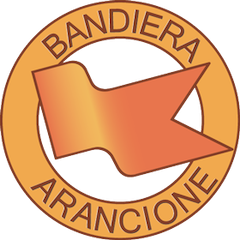Sorano
Sorano
About 20 kilometers from the west shore of Lake Bolsena we find the town of Sorano to complete the triptych of the Maremma tuff cities (Sorano, Sovana, Pitigliano). The town of rare beauty is not very large but boasts a very extensive municipality with ten hamlets. Of medieval origin, set on a tufaceous spur and surrounded by the green Sorano, it enjoys the nickname of “Matera of Tuscany” which already allows us to perceive the structure of the town. The panorama of the tufa rock dominated by the great fortifications of the past, the sometimes mysterious natural beauties that have endured over the centuries, the spas, the typical products such as meats and cheeses as well as oil and wine, make it today one of the most popular and visited destinations. of all this part of Tuscany.
The history of the town, like that of the whole area, is linked in antiquity to the Etruscan civilization and in the Renaissance period to that of the Orsini and Aldobrandeschi families. From 862 to 1312 the Soranese county followed the fate of this latter family, engaging in bloody struggles for supremacy and often for defense; in 1312, on the death of Margherita, the Aldobrandesca dynasty died out. In 1293 the daughter of Margherita, Anastasia, married Romano di Gentile Orsini, bringing him the ancient fief as a dowry. The prosperity of the Orsini, an ancient and noble Roman family, began with the nepotism of Pope Nicholas III, who enriched his relatives so as to make them the most powerful Roman family on the Guelph side. Sorano became the defensive bulwark of this family playing an important role in the struggles against the Republic of Siena from which the Orsini and their subjects did not always emerge victorious. In fact, in the year 1417, the county of Sorano and Pitigliano together with the neighboring fiefdom of Castell’Ottieri (now a hamlet of Sorano) was forced to sign a treaty declaring that it was submitting to the indirect sovereignty of the Sienese state. After the fall of the Republic of Siena, the Medici, with Cosimo I, took his place playing the role of enemies – friends. During this period the Orsinis consolidated the Rocca di Sorano, making it an admirable example of military architecture, as well as a powerful means of defense.
Crossing the Arco del Ferrini from Piazza del Municipio you enter the historic center, always dominated from above by the Orsini Fortress which can instead be reached from Via San Marco outside the ancient village. As mentioned, the fortress was built by the Aldobrandeschi and the Orsinis restructured and enlarged it, making it a true masterpiece. The bulk of the fortress is impressive developed for a good part in depth. Today the fortress can be visited entirely, some rooms house the Museum of the Middle Ages and the Renaissance, moreover the various buildings are connected by underground tunnels and walkways that form real labyrinths.
In the historic center there is also the Collegiate Church of San Nicola, a 13th-century church and above all the Clock Tower that rises above the Masso Leopoldino, a fortification obtained from the modeling of a tufaceous cliff to complete the defensive system of the fortress. On the top of the boulder there is a panoramic terrace.
The museum network of the Municipality of Sorano bears the name of Città del Tufo Archaeological Park and includes various points of interest located throughout the municipal area. The Etruscan Necropolis of Sovana and the Museum of San Mamilinao in Sovana, the Rock Settlement of San Rocco (a few kilometers outside Sorano) and the Archaeological Civic Museum Fortezza Orsini and the Rock Settlement of Vitozza in the hamlet of San are part of this network. Quirico.
The uniqueness of the entire area of the tuff cities in the municipalities of Sorano and Pitigliano are the vie cave, ancient Etruscan roads made up of deep paths carved out of the tufa rock. In the territory of Sorano there are several among which we point out Il Cavone, the Via Cava di San Sebastiano (which are located in the hamlet of Sovana within the Etruscan Necropolis) and the Via Cava di San Rocco (which is located at interior of the homonymous rock settlement).
The thermal baths located a few kilometers outside Sorano complete the tourist offer of the town. It is a structure that is located within a green area of about 7 hectares with a residence consisting of 30 apartments and 10 villas, two swimming pools, one of which is thermal with natural hot water that flows at 37 °. The spa is also open to outsiders by paying a day ticket.
Among the numerous hamlets of the municipality of Sorano as well as Sovana and San Quirico where the rock settlement of Vitozza is located, Montorio with its castle and the Rocca di Castell’Ottieri deserve mention and certainly a visit.
Sorano is also famous for some events that accompany tourists throughout the year both in the capital and in its many hamlets. Among the best known we point out the Spring Festival between April 25 and May 1, the Sagra del Prosciutto e Formaggio soranese and the Handcraft Market Exhibition which takes place at the same time as the festival in August, the Night of Light on December 30th. In the hamlet of San Quirico A Tutta Birra, the first weekend of August.


